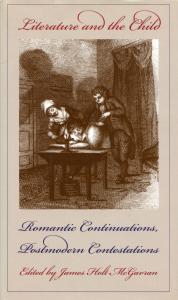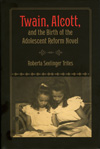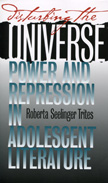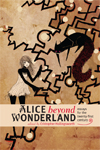Literature and the Child
“A much needed assessment of the role of Romanticism in children's literature. The essayists complicate the idea of Romanticism as they trace its origins and manifestations in children's literature in a project that provides readers with new ways of evaluating both Romanticism and children's literature.”—Roberta Seelinger Trites, author of Waking Sleeping Beauty: Feminist Voices in Children's Novels
“These distinguished essays powerfully define the myriad ways in which the Romantic image of the child, so compellingly portrayed by Wordsworth and Blake, continues to haunt us, shaping contemporary visions of childhood from Calvin and Hobbes to postmodernist poetry and fiction to sociological discussions of child-labor, child-abuse and the feminization of poverty. Literature and the Child, ably edited by James Holt McGavran, should be read by anyone interested in the history of the cultural construction of childhood.”—Anne K. Mellor
The Romantic myth of childhood as a transhistorical holy time of innocence and spirituality, uncorrupted by the adult world, has been subjected in recent years to increasingly serious interrogation. Was there ever really a time when mythic ideals were simple, pure, and uncomplicated? The contributors to this book contend—although in widely differing ways and not always approvingly—that our culture is indeed still pervaded, in this postmodern moment of the very late twentieth century, by the Romantic conception of childhood which first emerged two hundred years ago.
In the wake of the French Revolution and the Industrial Revolution, western Europe experienced another fin de siècle characterized by overwhelming material and institutional change and instability. By historicizing the specific political, social, and economic conflicts at work within the notion of Romantic childhood, the essayists in Literature and the Child show us how little these forces have changed over time and how enriching and empowering they can still be for children and their parents.
In the first section, “Romanticism Continued and Contested,” Alan Richardson and Mitzi Myers question the origins and ends of Romantic childhood. In “Romantic Ironies, Postmodern Texts,” Dieter Petzold, Richard Flynn, and James McGavran argue that postmodern texts for both children and adults perpetuate the Romantic complexities of childhood. Next, in “The Commerce of Children's Books,” Anne Lundin and Paula Connolly study the production and marketing of children's classics. Finally, in “Romantic Ideas in Cultural Confrontations,” William Scheick and Teya Rosenberg investigate interactions of Romantic myths with those of other cultural systems.






